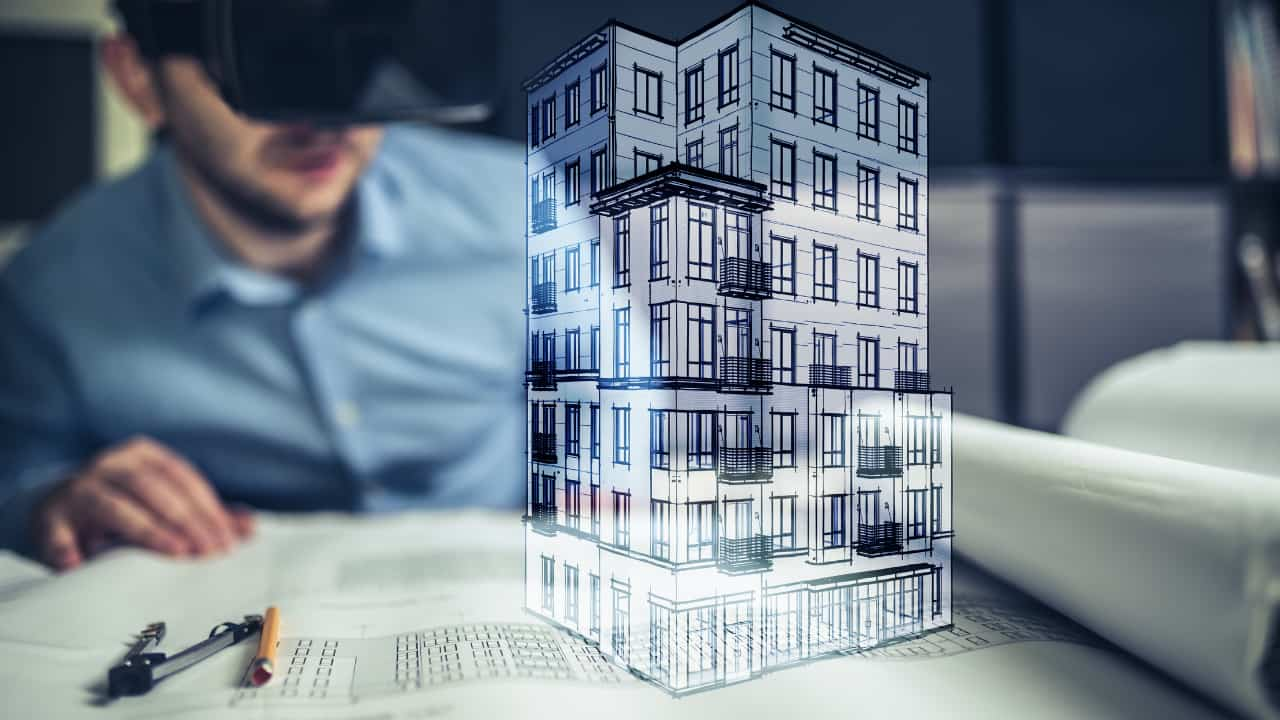In the realm of visual arts and design, 3D rendering stands out as a powerful tool that brings imagination to life.
Whether you’re an architect, a product designer, or a filmmaker, 3D rendering is a transformative process that turns concepts into vivid and realistic visuals.
In this comprehensive blog post, we’ll delve into the intricacies of 3D rendering, exploring its definition, techniques, applications, and the impact it has on various industries.
What Is 3D Rendering?
3D rendering is the process of generating two-dimensional images or animations from a three-dimensional model. It involves using specialized software to simulate lighting, textures, and camera angles, creating a lifelike representation of a virtual scene. Here are key aspects that encapsulate the essence of 3D rendering:
1. Virtual Visualization
- 3D rendering allows designers and artists to visualize and present their ideas in a virtual space.
- It transforms abstract concepts into realistic images that accurately depict the intended design or scenario.
2. Realism and Detail
- The goal of 3D rendering is to achieve a high level of realism by incorporating details such as lighting, shadows, reflections, and textures.
- This realism is crucial for architects, interior designers, and product developers to accurately convey their vision.
3. Versatility
- 3D rendering is a versatile tool used across various industries, including architecture, gaming, film, product design, and advertising.
- It adapts to different creative needs, from architectural visualization to creating lifelike characters for animated films.
4. Iterative Design
- Designers can easily make changes to the 3D model and instantly see the updated renderings.
- This iterative process facilitates experimentation and refinement, saving time and resources in the design phase.
Techniques in 3D Rendering
Achieving realistic and visually stunning 3D renderings requires the application of various techniques. From lighting to texturing, here are some fundamental techniques employed in the 3D rendering process:
1. Lighting
- Lighting is a critical element in 3D rendering, as it significantly influences the mood and atmosphere of a scene.
- Techniques such as global illumination and ray tracing simulate the behaviour of light, creating realistic shadows and reflections.
2. Texturing
- Texturing involves applying detailed surface characteristics to 3D models.
- Texture maps, including diffuse, specular, and normal maps, enhance the visual appeal and authenticity of rendered objects.
3. Shading
- Shading determines how light interacts with surfaces, affecting the appearance of materials.
- Realistic shading techniques, such as physically based rendering (PBR), mimic the way light interacts with different materials like metal, wood, or glass.
4. Rendering Engines
- Rendering engines are specialized software components that process the 3D scene and produce the final images.
- Popular rendering engines like V-Ray, Arnold, and Blender Cycles offer a range of features and capabilities for creating high-quality renderings.
Applications of 3D Rendering
The versatility of 3D rendering extends its applications across diverse industries, contributing to innovation and efficiency in the design and visualization processes. Here are notable applications of 3D rendering:
1. Architectural Visualization
- Architects use 3D rendering to create realistic visualizations of buildings and interior spaces.
- Clients can explore virtual walkthroughs and realistic renderings, providing a clear understanding of the final design.
2. Product Design and Prototyping
- Designers leverage 3D rendering to visualize product concepts before they are physically manufactured.
- Detailed renderings help in prototyping and making design decisions before moving to the production phase.
3. Animation and Film
- The entertainment industry relies heavily on 3D rendering for creating animated films, visual effects, and CGI (computer-generated imagery).
- 3D rendering enhances storytelling by bringing fictional worlds and characters to life with stunning realism.
4. Gaming
- In the gaming industry, 3D rendering is a fundamental component that contributes to the immersive gaming experience.
- Real-time rendering technologies enable dynamic and interactive gameplay environments.
5. Advertising and Marketing
- 3D rendering plays a crucial role in advertising by creating compelling visuals for products and services.
- High-quality renderings enhance marketing materials, from brochures to online advertisements.
The Evolution of 3D Rendering
The field of 3D rendering has witnessed significant advancements over the years, driven by technological innovation and the demand for more realistic visuals. Here are key aspects of the evolution of 3D rendering:
1. Advancements in Hardware
- The evolution of powerful graphics processing units (GPUs) has greatly accelerated the rendering process.
- High-performance hardware allows for quicker rendering times and the handling of complex scenes.
2. Real-time Rendering
- Real-time rendering technologies, such as Unreal Engine and Unity, have revolutionized the gaming industry.
- These technologies enable instantaneous rendering, making it possible to experience and interact with 3D environments in real time.
3. Cloud Rendering
- Cloud rendering services have emerged, allowing designers to offload rendering tasks to powerful remote servers.
- This approach enhances scalability and efficiency, particularly for large-scale projects with demanding rendering requirements.
4. Virtual and Augmented Reality
- 3D rendering has found applications in virtual and augmented reality experiences.
- Realistic renderings contribute to immersive virtual environments and interactive augmented reality applications.
Impact of 3D Rendering on Design and Industries
The integration of 3D rendering into various industries has had a profound impact on the design process and how products and spaces are visualized. Here are ways in which 3D rendering has influenced design and industries:
1. Enhanced Visualization
- 3D rendering provides a level of visualization that was previously unattainable with traditional 2D drawings.
- Designers and clients can better understand spatial relationships, materials, and overall aesthetics.
2. Cost and Time Efficiency
- Iterative design processes made possible by 3D rendering contribute to cost and time efficiency.
- Design changes can be implemented and visualized quickly, reducing the need for costly physical prototypes.
3. Improved Communication
- 3D renderings facilitate clearer communication between designers, clients, and other stakeholders.
- Visual representations help convey design intent more effectively than technical drawings or verbal descriptions.
4. Global Collaboration
- With the rise of digital collaboration tools and cloud rendering services, teams can work on 3D rendering projects collaboratively, regardless of geographical locations.
- This global collaboration fosters creativity and diversity in design.
Challenges in 3D Rendering
While 3D rendering has revolutionized the design landscape, it is not without its challenges. Overcoming these challenges is crucial for maximizing the benefits of 3D rendering. Here are some common challenges faced by professionals in the field:
1. Computational Intensity
- Creating high-quality 3D renderings can be computationally intensive, requiring powerful hardware and rendering engines.
- Achieving realistic results may necessitate longer rendering times.
2. Learning Curve
- Mastering 3D rendering software and techniques requires a significant learning curve.
- Designers and artists need to invest time in acquiring the necessary skills and staying current with evolving technologies.
3. Balancing Realism and Efficiency
- Striking the right balance between achieving realism and maintaining efficiency in the rendering process is a constant challenge.
- Designers must make choices based on project requirements and available resources.
4. Evolving Standards
- As technology advances, industry standards and software features continue to evolve.
- Staying informed about these changes and adapting workflows accordingly is essential for professionals in the field.
FAQ’s
1. What is 3D rendering?
3D rendering is the process of generating two-dimensional images or animations from a three-dimensional model. It involves simulating lighting, textures, and camera angles to create realistic visuals that accurately represent a virtual scene or object.
2. How does 3D rendering contribute to architectural visualization?
3D rendering enhances architectural visualization by providing realistic depictions of buildings and interior spaces. Architects use 3D rendering to create lifelike representations, allowing clients to explore virtual walkthroughs and gain a clear understanding of the final design.
3. What are some key techniques in 3D rendering?
Key techniques in 3D rendering include lighting, texturing, shading, and the use of rendering engines. These techniques collectively contribute to achieving realism by simulating the behaviour of light and enhancing the visual appeal of rendered objects.
4. In which industries is 3D rendering commonly used?
3D rendering is commonly used in industries such as architecture, product design, animation and film, gaming, and advertising. Its versatility makes it a valuable tool for visualizing concepts and creating realistic representations in various creative fields.
5. What challenges are associated with 3D rendering?
Challenges in 3D rendering include computational intensity, the learning curve of mastering rendering software, balancing realism and efficiency, and staying abreast of evolving industry standards. Overcoming these challenges is crucial for professionals seeking to maximize the benefits of 3D rendering.
Conclusion
3D rendering is a transformative force in the world of design, enabling artists, architects, and creators to turn their visions into compelling visual narratives.
From architectural visualizations that bring unbuilt structures to life to immersive gaming experiences and lifelike product presentations, 3D rendering has become an indispensable tool across diverse industries.
Whether you’re a seasoned professional navigating the complexities of 3D rendering or someone intrigued by the magic behind realistic visuals, this comprehensive guide provides insight into the definition, techniques, applications, and impact of 3D rendering.
As technology continues to advance, the future promises even more exciting possibilities in the ever-evolving realm of 3D rendering.
Looking for High-Quality 3D Rendering Houston Contact Us Today





